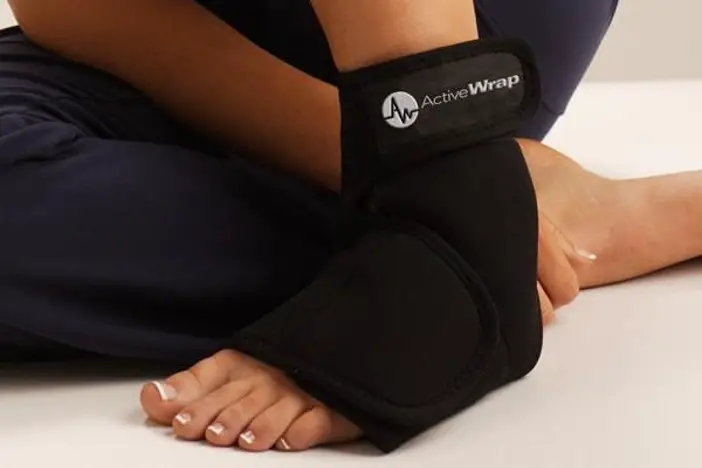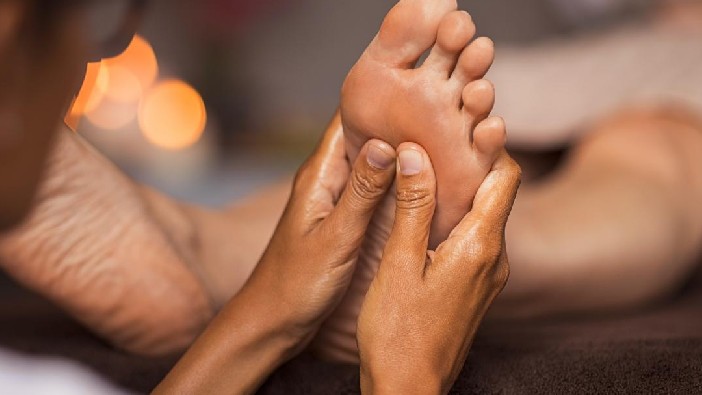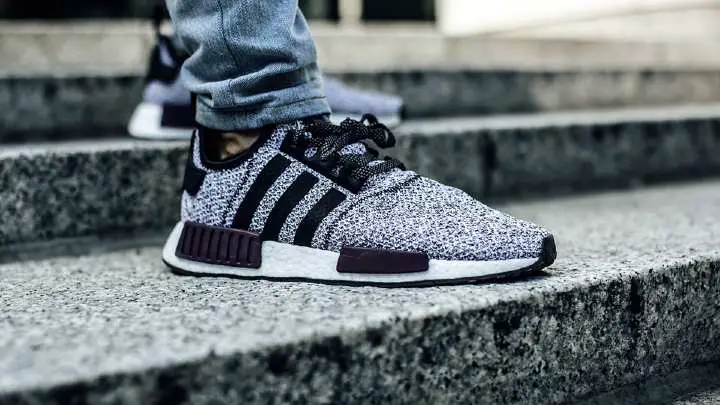Do you feel a stinging pain in your heel, and you want to get rid of it? This article provides you with tips on how to get rid of a heel spur. A heel spur is a bony growth and this growth occurs when there is a calcium deposit under the feet around the heel bone.
This calcium deposit grows to create a pointy shape and walking causes the spur to dig into the heel pad, causing a sharp stabbing sensation as you take steps. Heel spur usually causes severe pain when you walk around with your feet.
This article gives solutions on how to get rid of a heel spur. It is not easy to detect just by looking at the feet, you will need a proper diagnosis by an X-ray. Heel spur often doesn’t hurt, but it can cause heel pain. However, a heel spur is not usually the cause of heel pain.
How to Get Rid of Heel Spur
Resting is one easy way to relieve heel spur pain and also implementation of certain lifestyle changes. However, there are several treatment options to help you get rid of the heel spur and below are some effective ones.
1. Rest

Resting helps relieve acute pain. Resting your feet will help lessen the severity of the pain as well as prevent it from getting worse. When a person suffers from heel spur walks their feet on a hard surface, the pain heightens. Resting is a recommended treatment for heel Spurs.
2. Cold therapy

Applying ice on the foot can help relieve heel spur pain and reduce swelling of the feet. Doing this will help number the area. To do this treatment; simply place the feet on an ice pack and keep still for about 15 minutes. You can do this several times daily to relieve pain.
You can also roll your feet over a frozen water bottle for 15 minutes for the same effect.
SEE: Discover 9 Painless Tips for Removing Heel Callus
3. Physiotherapy
Physical therapy helps to prevent long-term pain with exercises. Exercises help to heal the heel muscles by stretching them. This helps to reduce the force on the heel spur. You can do these exercises anywhere and at any time. Some of these exercises and how to do them are below.
Towel stretch

How to do it:
- Sit on the floor with your legs out in front of you
- Wrap a towel around the foot and gently pull it till you feel a stretch
- Hold the stretch for a few seconds before releasing the towel
- Switch foot and repeat the process
- Do this 3 times per foot
Calf flex
Another name for this is heel cord stretch.
How to do it:
- Place your hand on the wall as you are facing it
- Then place one leg forward with a slight bend in the knee
- Place the other leg behind your body and ensure that it is standing straight
- Press your hips forward until you feel a stretch in your calves and in the heel of your back leg
- Hold this stretch for 20 seconds
- Return to start position and switch legs
- Repeat process 5 times per foot
Towel curls/grabs
How to do it:
- Sit on a chair with your feet flat on the ground
- Place a small towel on the ground in front of your feet
- Use your toes to grab the towel
- Release your grip on the towel after 5 seconds
- Switch foot and repeat the process.
Golf ball foot roll
How to do it:
- Sit on a chair
- Place the golf ball under the painful foot
- Roll the ball underneath your foot
- Continue for about 15 minutes
- If your other foot hurts, switch foot and repeat the process.
4. Over-the-Counter Pain Killer
The use of non-steroidal anti-inflammatory drugs such as aspirin, ibuprofen, naproxen sodium (Aleve) helps to relieve heel pain and discomfort by reducing tissue inflammations to prevent further damage.
However, this drug only helps relieve short-term pain and not everyone can consume these drugs. Consult your doctor before taking these medications if you have kidney problems, ulcers, or stomach bleeding.
5. Corticosteroid Injections
In cases where over-the-counter painkillers don’t work, corticosteroid injections are the next to try. These injections do not cure or rid the feet of the spur; it helps to relieve pain and swelling in the affected foot. However, taking too many injections can cause worse problems.
6. Essential Oils
Certain essential oils contain natural anti-inflammatory properties that help in reducing pain and swelling. Some of these essential oils are:
Lavender oil

This oil contains anti-inflammatory properties called beta-caryophyllene. It helps to treat painful inflammation. To use this oil, mix few drops of each with a carrier oil like coconut oil and massage it gently into the affected foot
Rosemary oil
Rosemary oil is effective as a pain reliever; it is a rich source of anti-inflammatory compounds like rosmarinic acid and carnosic acid. These acids contain pain-relieving properties that help soothe and treat inflammation.
To use this oil, mix a teaspoon of any carrier oil with just five drops of Rosemary essential oil, massage it gently on the affected area to help subdue the pain.
Bergamot oil
This oil is an extract from the rinds of citrus bergamia. It is a citrus fruit that grows on bergamot orange trees.
Bergamot oil contains active anti-inflammatory components such as limonene, linalool, and linalyl acetate.
These anti-inflammatory components help to heal wounds and other inflammation. To use this oil to relieve heel spur, mix two drops of bergamot oil with vegetable oil or any other carrier oil. Massage mixture into the affected area to relieve and cure a heel spur.
Thyme oil
This oil’s anti-inflammatory properties are effective for treating and reducing inflammations and infections. Thyme oil also contains antimicrobial and antioxidant properties; which are essential in treating and healing inflammations. This oil will help cure a heel spur.
Eucalyptus oil
Eucalyptus essential oil contains healing properties that help subdue the pain. The oil is an extract from the leaves of the eucalyptus tree. The anti-inflammatory properties of this oil ease pain and also speeds up the healing of heel spurs. Ensure that you dilute this oil before use.
SEE: How to Fix Cracked Heels Permanently – 13 Simple Tips
7. Orthotic Shoe Inserts
An orthotic shoe insert will provide extra heel support for your feet. This will reduce the pressure on the heels and also reduce pain. Getting and wearing comfortable shoes will help reduce heel spur.
Get yourself heel pads; firm heel support, flexible shoes, and molded orthotic fill to support your feet.
8. Home Remedies for Heel Spurs
Several home treatments work for this purpose. Aside from massaging with essential oil and ice therapy, which has been mentioned before, below are easy home remedies that will provide great relief to a heel spur.
Apple cider vinegar
Soaking your feet in a tub filled with warm apple cider vinegar will help pull out the excess calcium from your bone. This will help get rid of the heel spur. To use this treatment, simply soak your feet in warm water that has drops of apple cider vinegar in it.
You can also do this by soaking a towel in warm water that has apple cider vinegar in it and wrap the towel around the heels of your feet for a few minutes.
Baking soda
Applying baking soda remedy on the affected area will directly work on the excess calcium crystals deposited to your heel. All you need for this is baking soda. Simply mix baking soda with water to create a paste and apply it on your heel.
This remedy will help to balance the pH levels.
Epsom salt bath
Epsom salt is made of magnesium sulfate and, naturally, our bones store most magnesium in the body. To use this treatment, simply add some salt to the water and dip your feet in it for a few minutes. You can also massage your heels with it.
Flaxseed oil
The soil contains high alpha-linolenic acid. This acid is a form of Omega-3 fatty acid that helps to fight and cure inflammations. To use this remedy, pour a few drops of flaxseed oil in warm water and dip a towel in it.
Wrap this towel around your heel, place a heating pad over it to apply heat. Leave this on for about an hour or more. Try as much as possible to not move around when trying this treatment.
SEE: Best Essential Oils For Your Aromatherapy Uses
Anti-inflammatory component rich diet
Foods that contain anti-inflammatory properties also contain natural antioxidants and polyphenols. These properties are protective compounds that help reduce inflammation.
You can also prepare a treatment with one tablespoon of powdered ginger or turmeric and warm water. Add the powder into warm water and drink when you are in pain, this will help subdue and heal the heel spur.
9. Surgical Treatment For Heel Spur
There are several surgical ways to cure a heel spur. This surgery is done to remove the sperm from the air by reopening the foot to release the plantar fascia.
Before the surgery can be done, the patient must have done the recommended non-surgical treatments for a period of 9 to 12 months. If all the non-surgical treatment fails, then surgery can be considered to remove the heel spur.
However, this treatment can cause complications like nerve pain, recurrent ear pain, permanent numbness of the operated area, infection, and scarring.
How to Prevent Heel Spur
- Always wear well-fitting and comfortable shoes
- Wear appropriate footwear for each physical activities
- Try to avoid overworking your feet
- Do not walk barefoot on hard concrete floors
- Avoid putting too much pressure on your feet
FAQs on How to Get Rid of Heel Spur
How can I get rid of heel spur without surgery?
Try home remedies and therapies to get rid of the heel spur.
However, if there is no improvement after a few weeks, consult your doctor for assistance.
What is the fastest way to get rid of heel spur?
The fastest way to get rid of a heel spur is by using home remedies.
The easiest home remedies to try are; ice therapy, foot massages, and foot stretch.
How long does it take to get rid of heel pain?
There is no time-specific duration to the healing of heel spur.
A heel spur can take weeks or even months to heal. However, the average time it takes for a heel spur to heal is 10 – 15 weeks.
Conclusion
A heel spur is a bony growth caused by a calcium deposit under the feet around the heel bone. This can be a cause of heel pain. The three easiest ways to get rid of heel spur are; ice therapy, foot massage, and stretches.
To get rid of heel spurs, try the recommended non-surgical treatment and home remedies stated in this article. However, if the problem persists; consult your doctor for a proper diagnosis for surgical treatment.
Thanks for reading.
Africana Fashion provides you with health and wellness tips.






